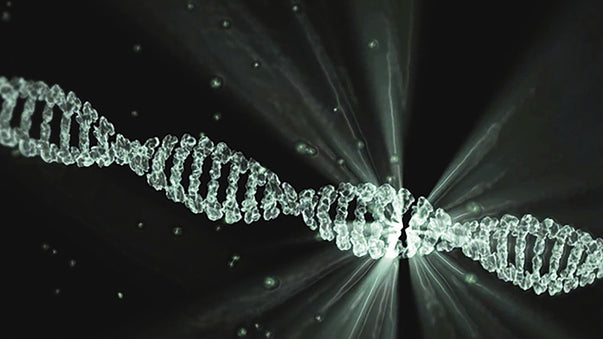Nanotechnology in the Public Health Sector

Among last week's biomedical news, we wish to single out the first two in the list below. Both are related to nanotechnology - engineering at very small scales - and both could have a dramatic impact on public health.
The nano vaccine delivery platform developed by University of Queensland (UQ) researchers, to be commercialized by UQ biotech spinoff Vaxxas, could permit delivering vaccines to children with higher efficiency and lower cost. UQ Professor Paul Young said the breakthrough provided the next step in consigning polio to history. "The research we are undertaking in conjunction with UQ and WHO can improve the reach of life-saving vaccines to children everywhere," said Vaxxas CEO.
Quantum dots have been engineered by University of Colorado scientists to fight antibiotic resistant bacteria. "We’ve developed a one-two knockout punch," said the co-lead author of the study. "The bacteria’s natural fight reaction [to the dots] actually leaves it more vulnerable."
The technique could soon find applications against drug resistant pathogens, which evolve their defenses faster than new antibiotic treatments can be developed, and therefore represent a serious public health problem. According to the scientists, quantum dots could become a platform technology that can be scaled and modified to combat a wide range of infections and potentially expand to other therapeutic applications.
Nano patches for better polio vaccine. Researchers funded by the World Health Organization (WHO), led by University of Queensland (UQ) bioscience experts, have shown that the Nanopatch -- a microscopic vaccine delivery platform first developed by UQ researchers -- combats the poliovirus more effectively than needles and syringes. The Nanopatch consists of an array of thousands of vaccine-coated microprojections that perforate into the outer layers of the skin when applied with an applicator device. A research paper published in Scientific Reports suggests that the Nanopatch could facilitate inexpensive polio vaccination campaigns.
Nano-engineered quantum dots supercharge antibiotics to fight drug-resistant bugs. Scientists at the University of Colorado Boulder have boosted the efficiency of existing antibiotics against drug-resistant bacteria by introducing nano-engineered quantum dots, which can be deployed selectively and activated or de-activated using specific wavelengths of light. The research findings, published in Science Advances, show that the dots can reduce effective antibiotic resistance by up to a factor of 1,000 without producing adverse side effects. The quantum dots release superoxide, which interferes with the bacteria’s metabolic and cellular processes, triggering a fight response that makes it more susceptible to the original antibiotic.
CRISPR-engineered mouse models of cancer to test therapies. Scientists at the Broad Institute of MIT and Harvard have described a new pre-clinical model that accurately reflects human disease genetics and reliably predicts which drugs have the most potential to succeed in patients. A research paper published in Cell Stem Cell describes how, using CRISPR-Cas9 editing of human stem cells followed by transplantation in mice, the researchers customized mouse models for the progression of leukemia. In a number of different experiments, the animal models successfully reflected human responses to a therapeutic agent commonly used to treat blood cancers.
Engineered body-on-a-chip technology permits testing new drugs. In the framework of the body on a chip project, funded by the Defense Threat Reduction Agency, a team of researchers led by Wake Forest Institute for Regenerative Medicine have engineered micro hearts, lungs and livers that can potentially be used to test new drugs. By combining the micro-organs in a monitored system, the researchers aim to mimic how the human body responds to medications. A study published in Scientific Reports describes how the scientists engineered micro-sized 3D organs, known as organoids, and connected them together on a single platform to monitor their function.
Gene therapy proves effective against deadly genetic disease. In a clinical trial led by researchers from the Dana-Farber/Boston Children’s Cancer and Blood Disorders Center and Massachusetts General Hospital, a gene therapy treatment has effectively stabilized the progression of cerebral adrenoleukodystrophy (CALD) in 88 percent of patients. Without treatment, CALD ultimately leads to a vegetative state, typically claiming boys’ lives within 10 years of diagnosis. The clinical trial results are published in the New England Journal of Medicine. The treatment used a proprietary gene therapy developed by biotech company bluebird bio, which plans to bring the therapy to market.
More Articles
Don't miss a beat! In our Pulse Newsletter, Thrivous curates the most important news on health science and human enhancement, so you can stay informed without wasting time on hype and trivia. It's part of the free Thrivous newsletter. Subscribe now to receive email about human enhancement, nootropics, and geroprotectors, as well as company news and deals.
Read more articles at Thrivous, the human enhancement company. You can browse recent articles in Thrivous Views. See other Pulse Newsletter articles. Or check out an article below.
-
Synthetic Biologists Hack Organic Life
The most interesting items of bioscience news released last week come from synthetic biology, the science of lab-created life. Synthetic ...
-
CRISPR Modifications for Faster DNA Editing
The top bioscience news headlines of last week are centered on the achievement of a Chinese research team, which fixed ...


